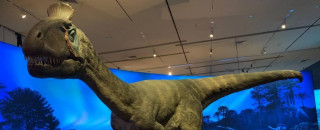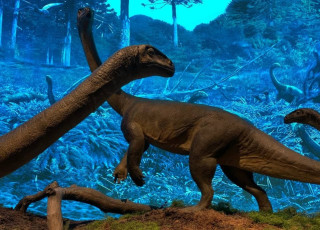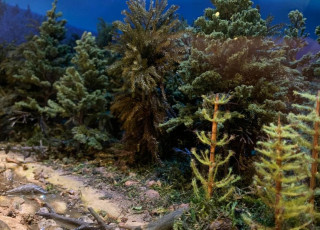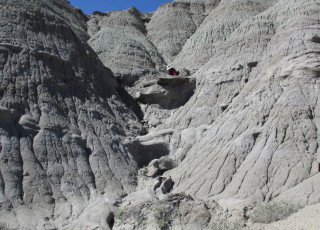Polar DinoFest: Marina Suarez
By Riley Black
Life isn't the only thing to change over time. The Earth's climate has shifted throughout its history, too. That's part of why dinosaurs like Cryolophosaurus were once able to exist within the Antarctic Circle and survive the long months of darkness, a warmer Mesozoic climate helping to create forests instead of ice fields.
University of Kansas geologist Marina Suarez is among the experts who have been using geological clues to track how the planet's climate has shifted through time. In particular, Suarez focuses on the Cretaceous - a time when mosasaurs swam off the shores of Antarctica and the duck-like bird Vegavis could be found along the beaches. Wet, lush forests grew in the continent's interior, and fossils of these organisms have helped fill out the picture of what Cretaceous Antarctica was like. But Suarez's area of expertise is climate proxies - substitutes for ancient climate that geologists can study today.
"Paleoclimatologists are constantly improving and refining and coming up with new climate proxies so we can measure temperature, precipitation, and the like," Suarez says. Some experts can look to leaf size and shape, for example, to get a rough idea of whether the local climate was warmer or cooler. Smooth-edged plant leaves are more often found in warmer climates and leaves with rougher, sharper teeth are often found in cooler climates. Other researchers might look at stable isotopes, or heavier versions of elements like Oxygen and Carbon, that relate to temperature to narrow down what the climate was like. Carbon isotopes, for example, can help estimate how much rainfall an area got in the past.
All of these environmental considerations are important for figuring out what life was like so long ago. And it might help us better understand our future. Studying ancient climate isn't just interesting and cool, Suarez says, but past climates with elevated greenhouse gas levels in the atmosphere might help us predict what conditions we'll face as humans continue to alter our current climate. Records of the ancient past locked in frozen Antarctic rock offer a way to plan for what's ahead.
Click Here to Explore More of NHMU's Polar DinoFest
Riley Black is the author of Skeleton Keys, My Beloved Brontosaurus, Prehistoric Predators, and a science writer for the Natural History Museum of Utah, a part of the University of Utah in Salt Lake City. Our mission is to illuminate the natural world and the place of humans within it. In addition to housing outstanding exhibits for the public, NHMU is a research museum. Learn more.



